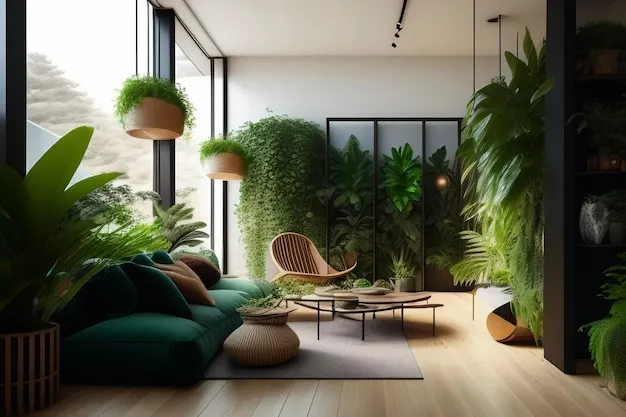
The Transformative Power of Indoor Greenery Integration
In the realm of architectural design and interior aesthetics, the incorporation of indoor greenery has evolved from a mere trend to a fundamental aspect of creating healthy, vibrant spaces. From residential dwellings to commercial offices and public institutions, indoor greenery integration has become a hallmark of modern design, enriching indoor environments and enhancing the well-being of occupants. Let's explore the significance of indoor greenery integration and its profound impact on the places we inhabit. Embracing Biophilic Design: Indoor Greenery Integration At its core, indoor greenery integration embodies the principles of biophilic design, a concept rooted in the innate human connection to nature. Biophilic design seeks to foster environments that mimic natural settings, incorporating elements such as plants, natural light, and organic materials to create spaces that resonate with our evolutionary heritage. Indoor greenery serves as a tangible expression of this design philosophy, infusing interiors with vitality, tranquility, and a sense of rejuvenation. How Does It Work? Integrating indoor greenery into architectural and interior design involves strategic planning and creative execution. Designers carefully select plant species based on factors such as light levels, humidity, and maintenance requirements, ensuring optimal growth and longevity. From potted plants and hanging gardens to living walls and vertical gardens, there are myriad ways to incorporate greenery into interior spaces, each offering unique aesthetic and functional benefits. Advantages of Indoor Greenery Integration 1. Improved Indoor Air Quality: Indoor plants act as natural air purifiers, absorbing harmful pollutants and volatile organic compounds (VOCs) from the air and releasing oxygen. By incorporating greenery into indoor spaces, designers can mitigate indoor air pollution and create healthier environments for occupants. 2. Enhanced Well-being: Numerous studies have shown that exposure to indoor greenery can have positive effects on mental health and well-being. Plants have been linked to reduced stress levels, improved mood, and increased productivity, creating a more conducive atmosphere for work, study, and relaxation. 3. Biophilic Connection: Indoor greenery fosters a sense of connection to nature, even in urban environments where green spaces may be limited. By bringing elements of the outdoors inside, designers create spaces that evoke feelings of calmness, serenity, and vitality, promoting a sense of harmony and balance. 4. Visual Appeal: Indoor plants add visual interest and texture to interior spaces, enhancing their aesthetic appeal and creating focal points within a room. From lush foliage to colorful blooms, greenery brings life and vibrancy to any setting, elevating the overall design scheme and creating a more inviting atmosphere. 5. Sustainability: Indoor greenery integration aligns with principles of sustainability and environmental responsibility. By incorporating plants into interior spaces, designers contribute to carbon sequestration, energy conservation, and ecosystem preservation, supporting a more eco-friendly approach to design and construction. Conclusion Indoor greenery integration represents a symbiotic relationship between architecture and nature, enriching indoor environments while promoting human health and well-being. As we strive to create spaces that nurture and inspire, the inclusion of indoor plants emerges as a timeless design strategy that transcends aesthetics to touch the very essence of what it means to inhabit a space. By embracing the transformative power of indoor greenery, designers can create environments that not only delight the senses but also foster a deeper connection to the natural world, enriching the lives of occupants and enhancing the quality of our built environment.
0 Comments